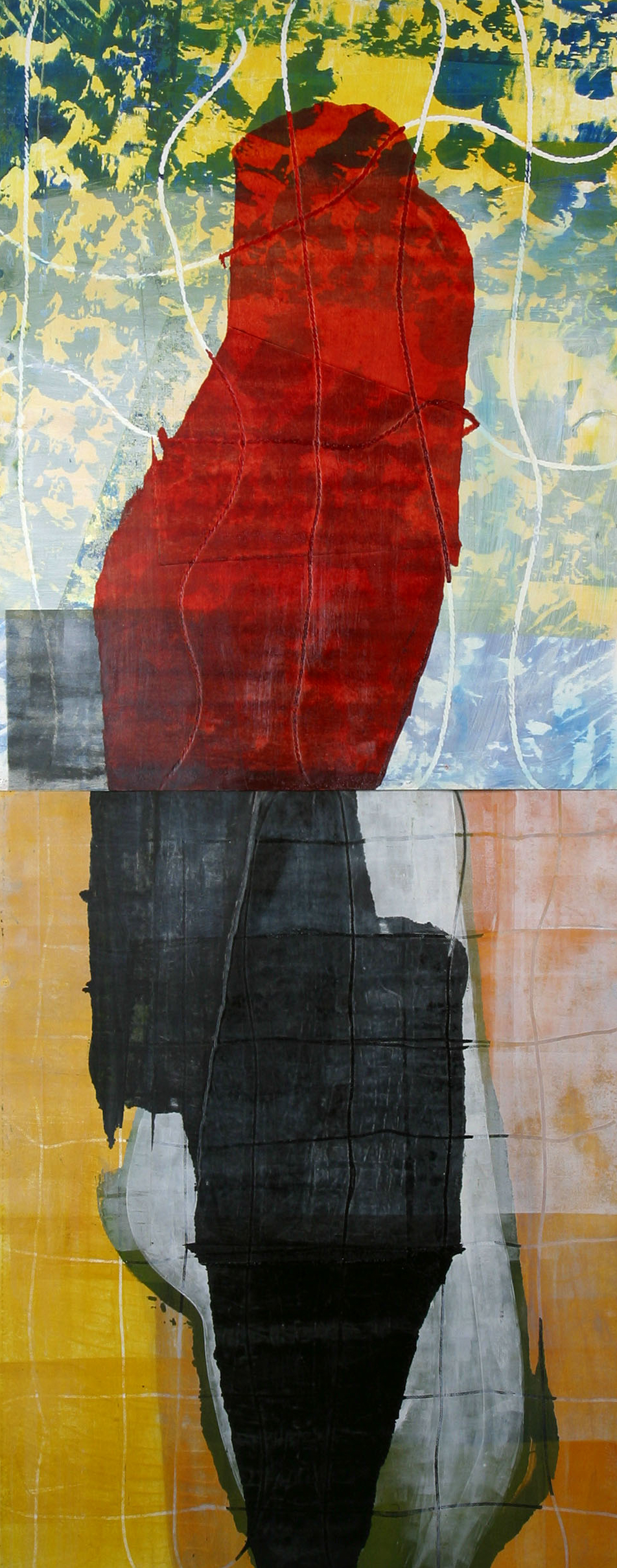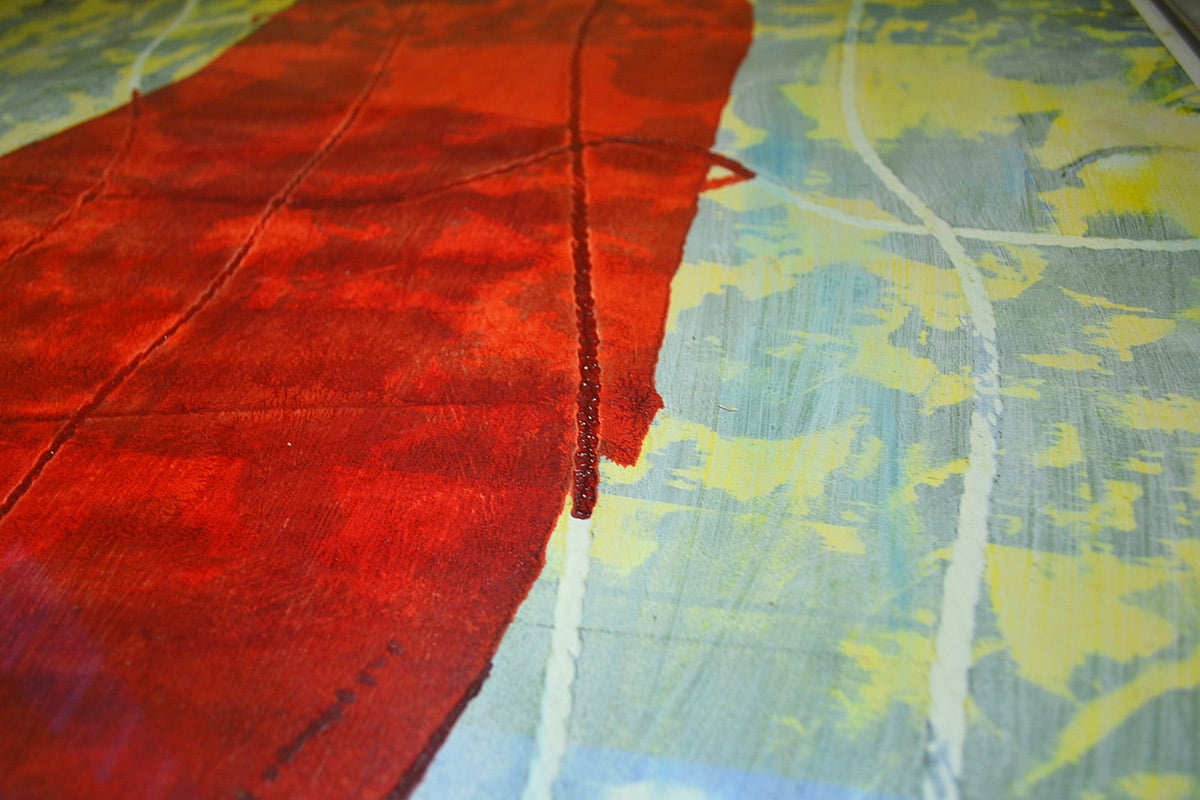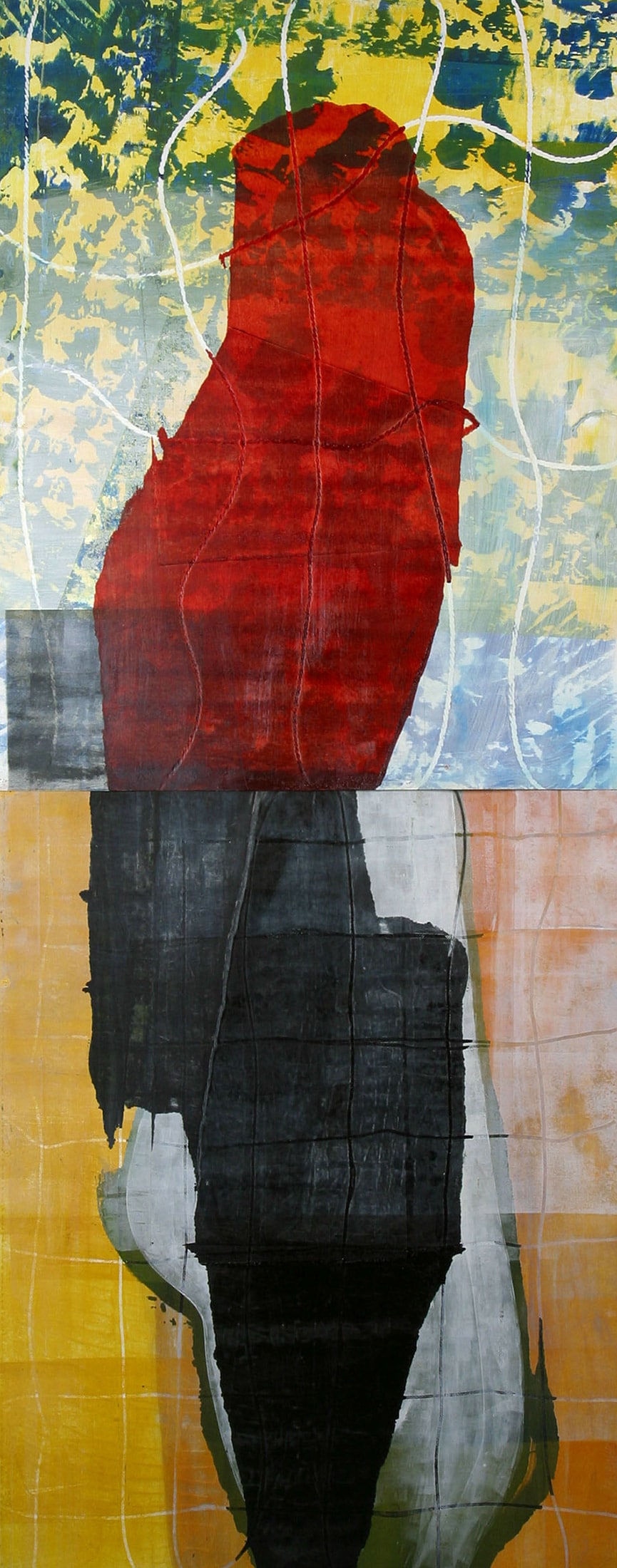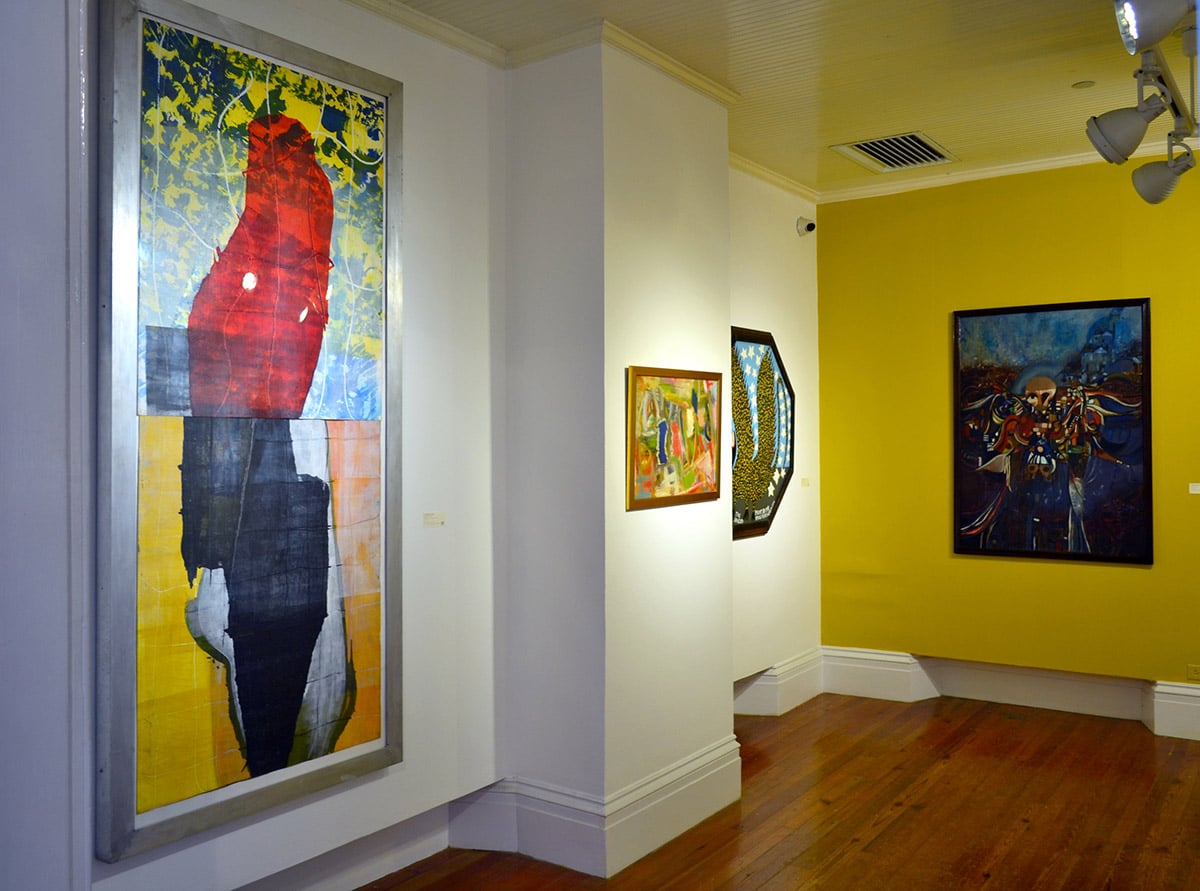
By Natascha Vazquez.
The interpretation of abstract art entails an inventiveness that allows you to discover for yourself the meaning behind the work. It’s an organic process, it has no equation or set of rules – the art presents itself and you are left with little information to process it. For many, this is unsettling. As humans, we yearn for understanding – we desire clear, detailed instruction. Abstract art provides none of that.
Revolutionary colour field painter Mark Rothko says, “Art that truly engages us is felt even when you have turned your back on it.” There’s something really special about that – about feeling the sensation of a work beyond its physicality. It’s when you can feel the strength of the painting from across the room. You can stand in the space the artist once occupied and imagine him or her in that same spot, debating over the next smear of black or red pour or blue dot. Similarly, Jerry Saltz says, “Abstraction disenchants, re-enchants, detoxifies, destabilises, resists closure, slows perception, and increases our grasp of the world.”

Installation shot of “Untitled II” (2000) by Michael Edwards, as seen in the current Permanent Exhibition “Revisiting An Eye For the Tropics”, on view through February 18th, 2018.
Bahamian artist and educator Michael Edwards presents us with “Untitled II,” a monotype that employs the techniques of painting, silk screening and embossing to create a non-objective mixture of intentionally placed colour, line, texture, and pattern. Edwards brilliantly captivates the language of painting in this work, exploring the way in which a mark can exist and how it changes when paired with colours or textures or gradients. How does a translucent red transform when placed next to a deep black or on top of a blue and yellow pattern? Can a sense of unity still be achieved within the diversity of this work through a commonly-shared direction? Although there is great diversity within the work, it follows a vertical orientation, flowing from top to bottom.
The eye begins at the top of this composition, circulating through a thin layer of red that delicately lies above a series of rapid patterns. The first set of patterns appear to be deep blues screened over a solid yellow. Edwards’ handwork here is energetic – the work itself becomes evidence of his interaction with the material. An organically-printed rope pattern delicately sits on top, creating a type of grid that provides some form of structure. The thin red pour sits in the grid with a sense of urgency that captures you once again and draws you down towards the centre of the work. One might expect that the red would delicately turn into the black, seamlessly transitioning from one colour to the next, but it doesn’t happen that way. The clumsy interruption of a paper seam catches the eye and abruptly stops you. Here, a clear insight into the materiality of the work adds an intense layer of contrast to what once appeared to be so delicate.

“Untitled II” (2000), Michael Edwards, monoprint on museum board, 85” x 32”. Part of the National Collection, acquired from the Inaugural National Exhibition. Image courtesy of the NAGB.
Edwards has intentionally emphasised his material, providing insight for the viewer in understanding the process of this craft. There is a slight shift in the way the form continues down; it is similarly shaped but offset ever so slightly. This shift stimulates the eye in a way that brings the work great unpredictable complexity – and we are suddenly left with what appears to be an infinite black. It is rough with drips and smears and emphasises the characteristics of ink and its relationship with gravity. Edwards has effectively captured a sense of space through his use of colour – the black feeling as if it is occupying the foreground, up close and personal, while the grey tones recede into the distance.
One may begin relating this to something within one’s physical reality – a sense of 3-dimensionality, if you will. But when we step out of the print again, we realise it is merely colour and shape and does not provide any detail to help us in the understanding of what it may be. And that is all that it is. Without any answers, the eye is left to circulate the work again, hungry for clarity. When yet more questions arise, the work has done its job. I remember turning my back to it and still feeling its presence, trying to continue deconstructing it, and then finally accepting its ambiguity.

Detail of Michael Edwards’ monoprint, “Untitled II” (2000), part of the National Collection.
According to art theorist Stephen Knudsen, the intensity of a painting lies in its ability to exert great energy, strength, depth and emotional force. The complexity of a painting, similarly, involves building variety within and among formal elements of a work: line, shape, value, hue, saturation, translucency, opacity, textures. And then, he also rightfully states that unity is the combining of elements within the painting into an effective whole. In this work, Edwards captures intensity within the layering of diverse mark-making, pattern and form. He presents a close relationship between opaque colours hiding beneath translucent pours, weaved with organic lines. He dictates the speed and direction of our eye, moving from north to south slowly, stopping, and then continuing rapidly until our vision runs off the surface and we are forced to start again.
The understanding of this work lies in the acceptance of not knowing entirely, in the appreciation and celebration of craftsmanship, and in the power of the creative sensation. Edwards has so masterfully achieved a sense of intensity within this work that we cannot help but revisit it, delightfully finding new fragments with each return.
“Untitled II” is currently on view in the NAGB’s Permanent Exhibition “Revisiting an Eye for the Tropics” through February 18th, 2018.
Still one of my favourite works of Michael Edwards. Ruedi B.
Comments are closed.